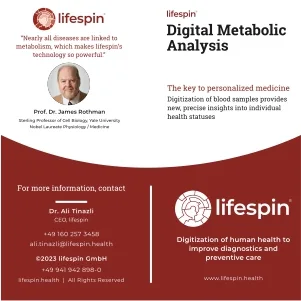Walking is sometimes equated with simplicity itself. If your task is a “walk in the park,” it might require little more than baby steps to get things moving.
But putting one foot in front of the other can set you on a path for significantly better health, experts say – even without a lot of heavy lifting or jumping through hoops.
“People underestimate just how important it is to walk,” said Dr. Tiwaloluwa Ajibewa, an assistant professor of preventive medicine at Northwestern University’s Feinberg School of Medicine in Chicago.
Walking can help with weight control and reduce the risk of heart disease, diabetes and more, said Dr. Kelley Pettee Gabriel, associate dean for research at the University of Alabama at Birmingham’s School of Public Health. For people with heart disease, “it’s really helpful for the management of symptoms and improving quality of life.”
So, whether you’re a dedicated step-counter or a certified couch potato ready to make a change, here’s what to know.
It’s a great first step
If you’re doing any type of walking, you’re moving. That’s both obvious and important, because being sedentary – sitting, lying down – has been linked to an increased risk of diabetes, heart disease and premature death. Even a little bit of light activity can help lower the risks.
“The main thing that we try to tell folks is to sit less, move more,” said Ajibewa, a movement scientist.
Beyond being anti-sedentary, walking at a brisk pace counts toward the minimum of 150 minutes of moderate-intensity physical activity recommended by federal guidelines, Gabriel said, noting that “substantial evidence” supports the idea that such exercise can boost physical and mental health.
It doesn’t have to be 10,000 steps
Although it’s a nice, round number, the idea that people need to take 10,000 steps a day came from a Japanese company’s marketing tactics in the 1960s, Gabriel said. More recent research has shown that the optimal number of steps varies depending on factors such as age and your goal.
Gabriel pointed to an analysis, published in The Lancet Public Health in 2022, that examined data from 15 studies. It found that while taking more steps per day was associated with a lower risk of dying, the benefits in people 60 and older plateaued at about 6,000 to 8,000 steps a day. But in younger adults, benefits didn’t flatten out until approximately 8,000 to 10,000 steps.
Also in 2022, a study in JAMA Neurology reported that the optimal number of steps associated with lower dementia risk was about 9,800 steps a day. But even people who walked about 3,800 steps a day still reduced that risk.
A study published in March in the British Journal of Sports Medicine suggested that any amount of daily steps above 2,200 was associated with a reduced risk of death and cardiovascular disease, with the lowest mortality risk coming at between 9,000 and 10,500 steps a day.
Feel the need for speed?
As with step count, the importance of pace will vary depending on what health condition you’re looking at, Gabriel said.
“For some outcomes, you really need to be at a moderate or higher pace,” she said. Some studies have shown that faster walking lowers diabetes risk, for example, and others have shown it takes regular physical activity to improve cholesterol and triglyceride levels.
But for other things, such as weight control, it’s not the speed but the overall energy expenditure that matters, Gabriel said.
And any movement counts
“Walking looks different for different people,” Gabriel said, and everyone can benefit from moving, no matter how they get around. People whose mobility is aided by a wheelchair or other device can still have better health through physical activity.
“It’s really about walking any way that you can,” she said.
Go where you want to go
Where you walk – whether it’s down the street or on a treadmill – doesn’t matter, Gabriel said. What’s important is finding something that works for you.
So, if you want to walk around the track while your kid is at soccer practice, that works, she said, but if you’d rather go to the mall or gym and walk there because it’s raining or you’ve got safety issues in your neighborhood, “go for it.”
It’s a city design issue
Just because walking is a basic form of exercise doesn’t mean everyone has the same access to it.
Some urban features encourage it, Ajibewa said. With “blue space” – access to coasts, lakes and rivers – people are more likely to be active and have better mental health. The same goes for “green space,” such as parks or forests. Research shows people in greener neighborhoods are more likely to walk than those in less-green areas. People in walkable neighborhoods tend to be more physically active and have a healthier weight.
But, he said, “not everyone has the same opportunities to go on a walk or to be active in their neighborhood.” Someone in a walkable city, such as New York City, will have more opportunity to walk than someone in a car-oriented city such as Houston.
On the neighborhood level, issues such as safety, street lighting and the condition of the sidewalks matter. A 2015 surgeon general’s report on the importance of walkable communities said that in 2012, more than 3 out of 10 people age 16 and older reported that no sidewalks existed along any street in their neighborhood.
Historical and systemic inequities have played a role. All of that means walking is a matter of policy, Ajibewa said, whether it’s supporting safe routes for children to walk to school or making sure parks have equipment and programs that support healthy activities.
How to get started
You can begin a walking routine with something as simple as getting up from the couch during commercials. “A little bit of activity is probably the best way to start,” Ajibewa said. “Continue to do more and more. Over time, that becomes easier for you.”
Gabriel said that when starting any new habit, it’s important to think about how you’re going to make it part of your routine. “Take out a calendar, or look at your phone calendar, and start blanking out days and hours when you’re going to be able to make this change.”
You’ll need comfortable shoes, and she recommended dressing in layers, because whether you’re walking around a sunny block or in an air-conditioned mall, “eventually, you’re going to warm up and want to shed some of those clothes.”
If you’re walking at night, don’t forget safety gear. “Wear the bright colors and bring a flashlight,” she said. “You have to make sure people can see you.”
The next steps
Once you’ve been at it for a while, Gabriel said, don’t be afraid to vary your route and your pace. “Your body progresses more when you surprise it a little bit,” she said. Find a path with hills, or try alternating intervals of slower walking with a brisk pace.
Also Read: How Healthy is Your Company?
Enjoy the benefits
Gabriel knows about the mental and physical benefits of walking firsthand. A cyclist, she had to set her bike aside after surgery recently. “The only thing I was able to do to keep my activity up was to walk,” she said. “I wasn’t able to walk fast or far, but it kept me in the swing of a physically active mindset.”
Her 80-year-old father is another example. “He’s been tracking his steps since 2016, and he’s walked over 14,000 miles.” She saw him struggle when a health setback kept him from his daily walk – and knows his well-being got a boost when he could once again start aiming for his daily 10,000 steps.
“He’s so proud,” Gabriel said. “He tells me his steps and how he’s walked across the United States five times, basically.”
Of course, you don’t have to go that far on your first day. It can start with baby steps.
“Being humans, we’re meant to be moving,” Ajibewa said, so just move as much as you can. “It all goes back to sitting less, moving more.”
Source: Source: American Heart Association News












